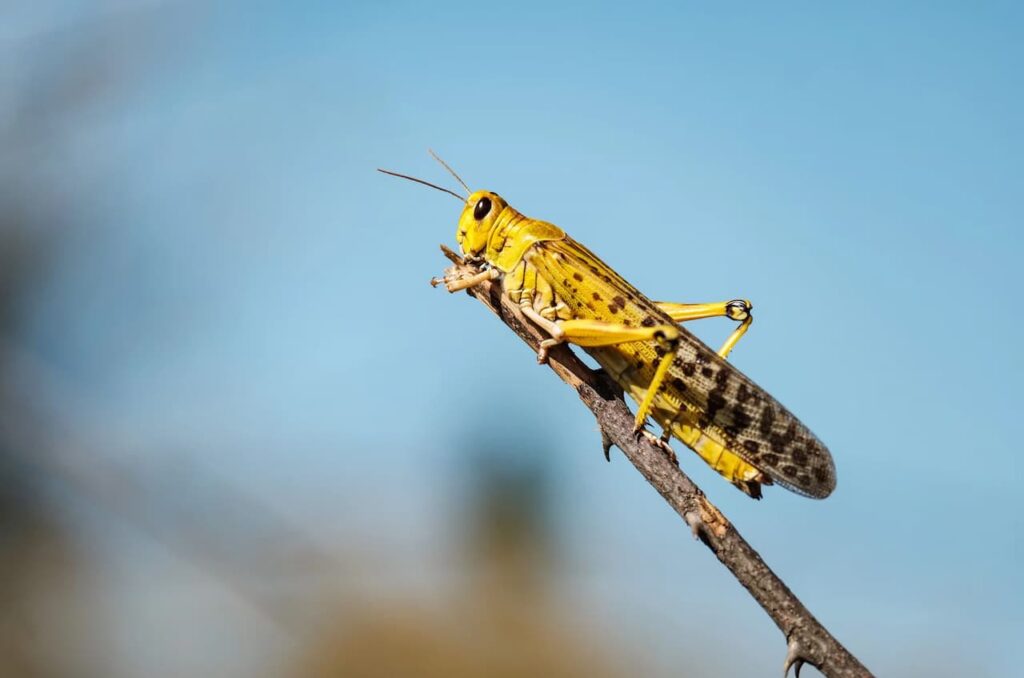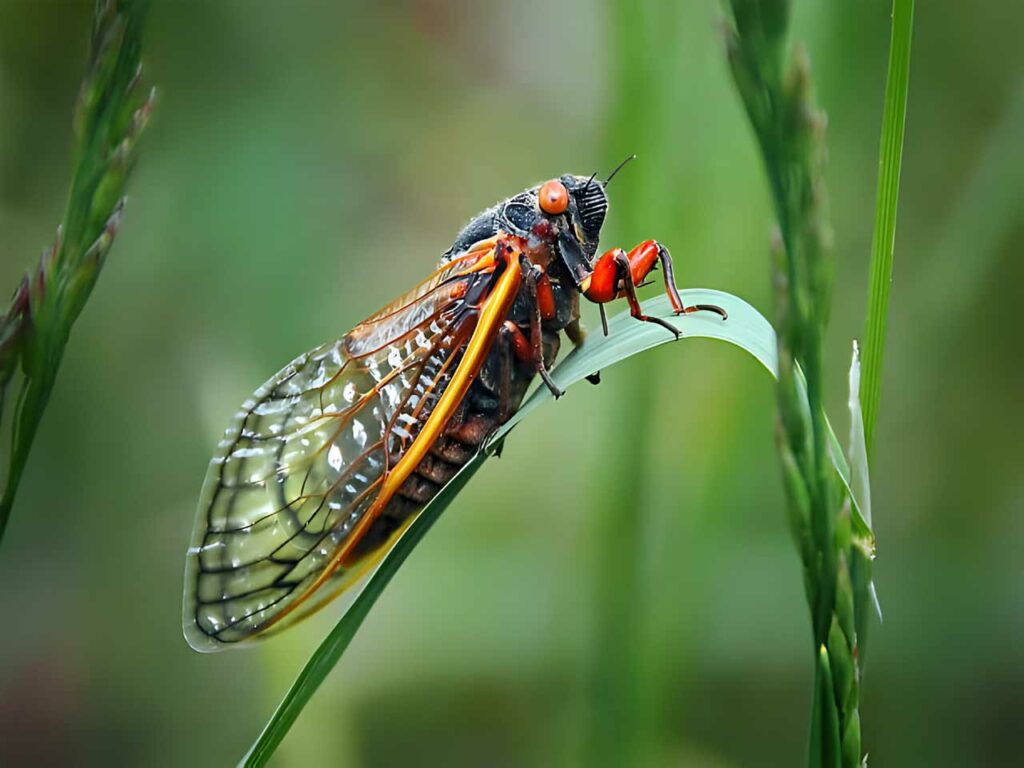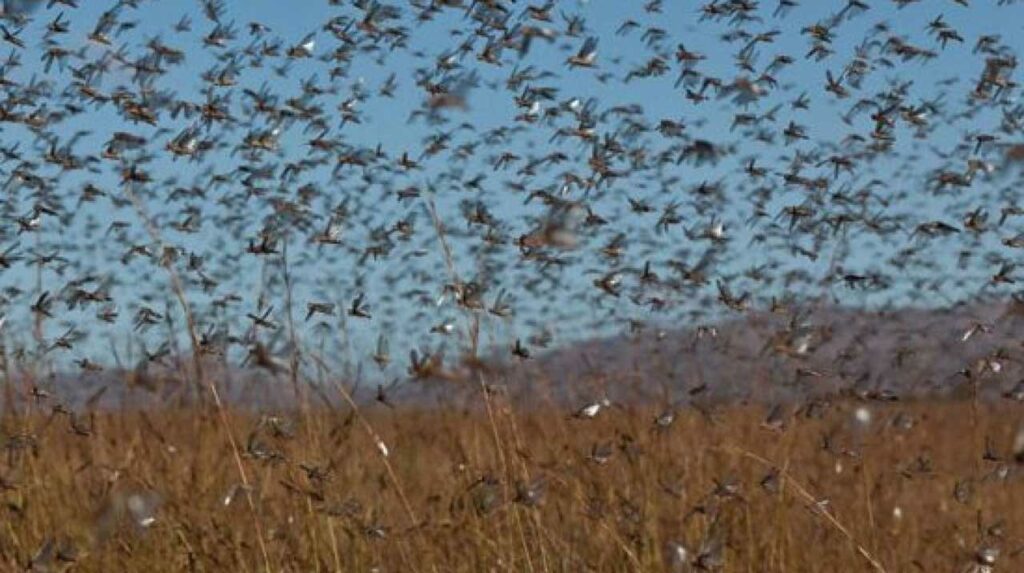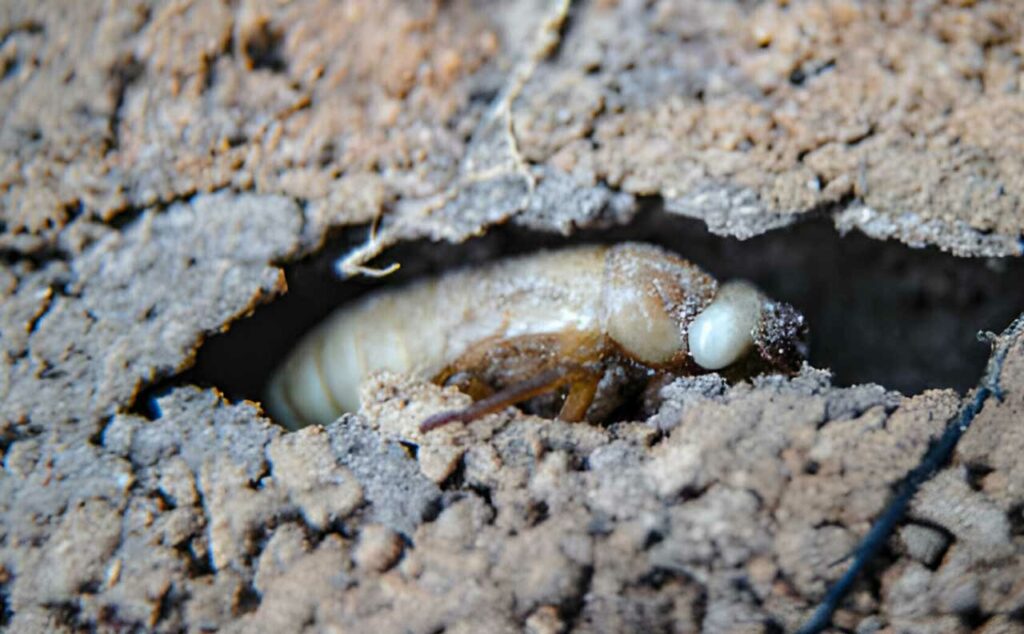Locusts and cicadas are two types of insects often confused due to their ability to produce sound and their occasional appearance in large numbers.
However, these insects belong to different families and have distinct characteristics, behaviors, and life cycles.
This article aims to clarify the differences between locusts and cicadas, shedding light on their unique traits.
Key differences between Locusts and Cicadas
| Locust | Cicada | |
|---|---|---|
| Antennae | Short | Long |
| Legs | Strong, muscular hind legs for jumping | Legs adapted for climbing |
| Wings | Can be clear or colored, depending on the species | Transparent, long, membranous front wings |
| Color | Varies, often green or brown | Ranges from green to black, often with intricate patterns |
| Size | 0.5 to 3 inches in length | over 2.5 inches in length |
Physical Characteristics

Locusts are a type of grasshopper belonging to the family Acrididae. They are characterized by their relatively short antennae and strong, muscular hind legs designed for jumping.
Locusts can vary in color, often being green or brown, which helps them blend into their environment. During swarming phases, some species may change color and form.

Cicadas, on the other hand, are part of the family Cicadidae and are known for their prominent eyes set wide apart, transparent wings, and long, membranous front wings.
They have longer antennae compared to locusts and can range in color from green to black, often with intricate patterns. Cicadas are also larger than most locust species.
Behavior and Habitat

Locusts are notorious for their swarming behavior, which can lead to significant agricultural damage. They are primarily found in arid or semiarid regions and are capable of traveling great distances in large swarms.
Locusts are solitary insects but can become gregarious and form swarms under certain environmental conditions, such as drought followed by rapid vegetation growth.
Cicadas are known for their distinctive songs, produced by males to attract females. They spend most of their lives underground as nymphs, emerging only to mate and lay eggs.
Cicadas are more commonly found in temperate to tropical climates and are famous for their periodic emergence, with some species appearing en masse every 13 or 17 years.
Diet
Locusts are herbivorous and feed on a variety of plants, including crops, leaves, and flowers. Their swarming behavior can lead to devastating agricultural losses as they consume nearly all vegetation in their path.
Cicadas feed on the sap of trees and plants. The nymphs suck nutrients from tree roots underground, while adult cicadas feed on sap from branches and stems. Their feeding generally does not cause significant harm to plants.
Life Cycle
The life cycle of a locust includes three stages: egg, nymph (or hopper), and adult. The duration of the locust life cycle can vary but typically lasts a few months. Locust swarms can breed rapidly, increasing their numbers exponentially under favorable conditions.

Cicadas have a more extended life cycle, with some species spending 13 or 17 years underground as nymphs before emerging to mate, lay eggs, and die shortly afterward. This long developmental period is followed by a brief adult life, often lasting just a few weeks.
Conclusion
While locusts and cicadas may share some superficial similarities, they are distinctly different in terms of physical characteristics, behavior, habitat, diet, and life cycle.
Locusts are migratory pests known for their potential to cause agricultural devastation, while cicadas are celebrated for their periodic, synchronized emergences and the males’ iconic songs.
Understanding these differences helps appreciate the diversity and complexity of the insect world and the unique role each species plays in their respective ecosystems.
FAQs
Locusts are a type of grasshopper known for their swarming behavior and potential for agricultural damage, while cicadas are recognized for their loud songs and periodic mass emergences. Locusts have shorter antennae and are primarily found in arid regions, whereas cicadas have longer antennae, spend years underground as nymphs, and are found in temperate to tropical climates.
You can distinguish them by appearance: locusts have shorter antennae and muscular hind legs for jumping, while cicadas have prominent eyes, transparent wings, and are larger. Additionally, cicadas have distinctive songs produced by males, a feature not found in locusts.
Cicadas spend most of their life underground as nymphs to avoid predators and to feed on the sap from tree roots. This long developmental phase is followed by a brief adult stage where they emerge to mate.
Locusts can pose a significant threat to agriculture due to their swarming behavior and consumption of vegetation. Cicadas, however, mainly feed on tree sap and generally do not cause significant harm to crops.
Locust swarming is triggered by environmental factors such as drought followed by rapid vegetation growth. These conditions prompt solitary locusts to change behavior and form large swarms that can travel great distances to find food.
Some cicada species, known as periodical cicadas, emerge en masse every 13 or 17 years, depending on the species. Other cicada species emerge more frequently, every 2 to 5 years.
While both locusts and cicadas are insects, they belong to different families. Locusts are part of the Acrididae family (grasshoppers), and cicadas belong to the Cicadidae family, making them distant relatives within the insect world.
Locusts have a shorter lifespan, usually living a few months to a year. Cicadas have a much longer lifecycle, with periodical cicadas living 13 or 17 years underground before emerging as adults.




